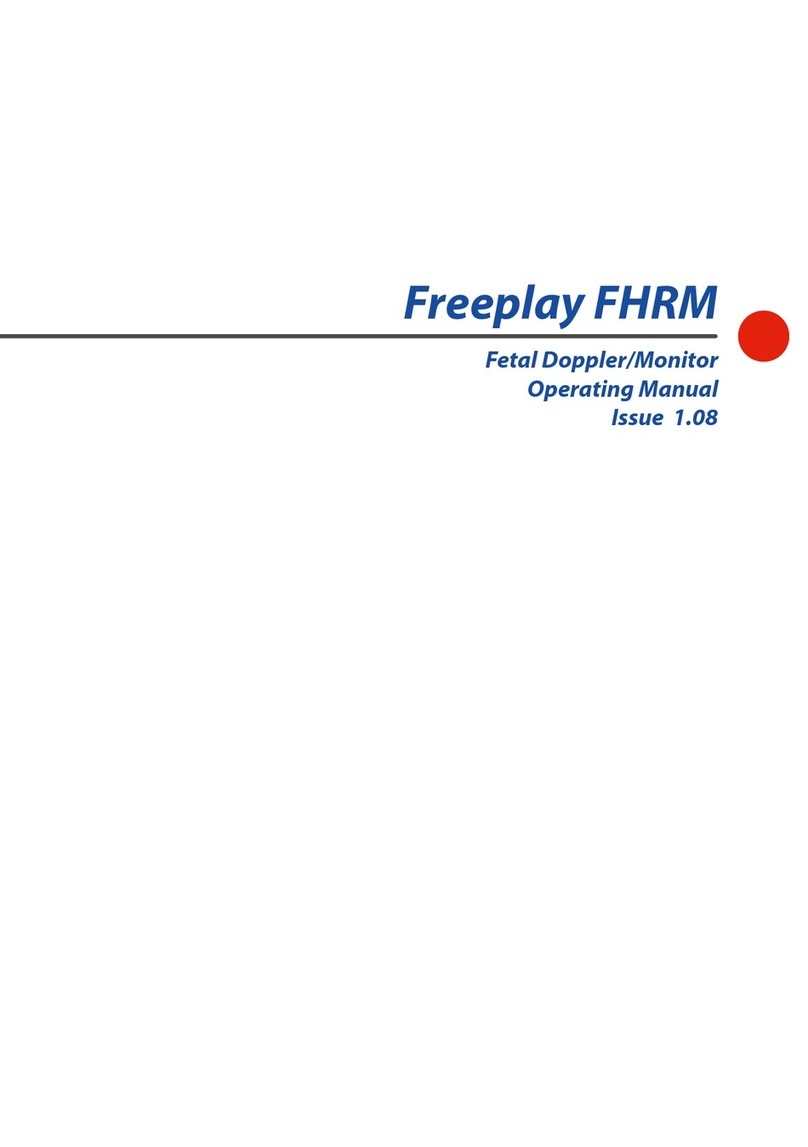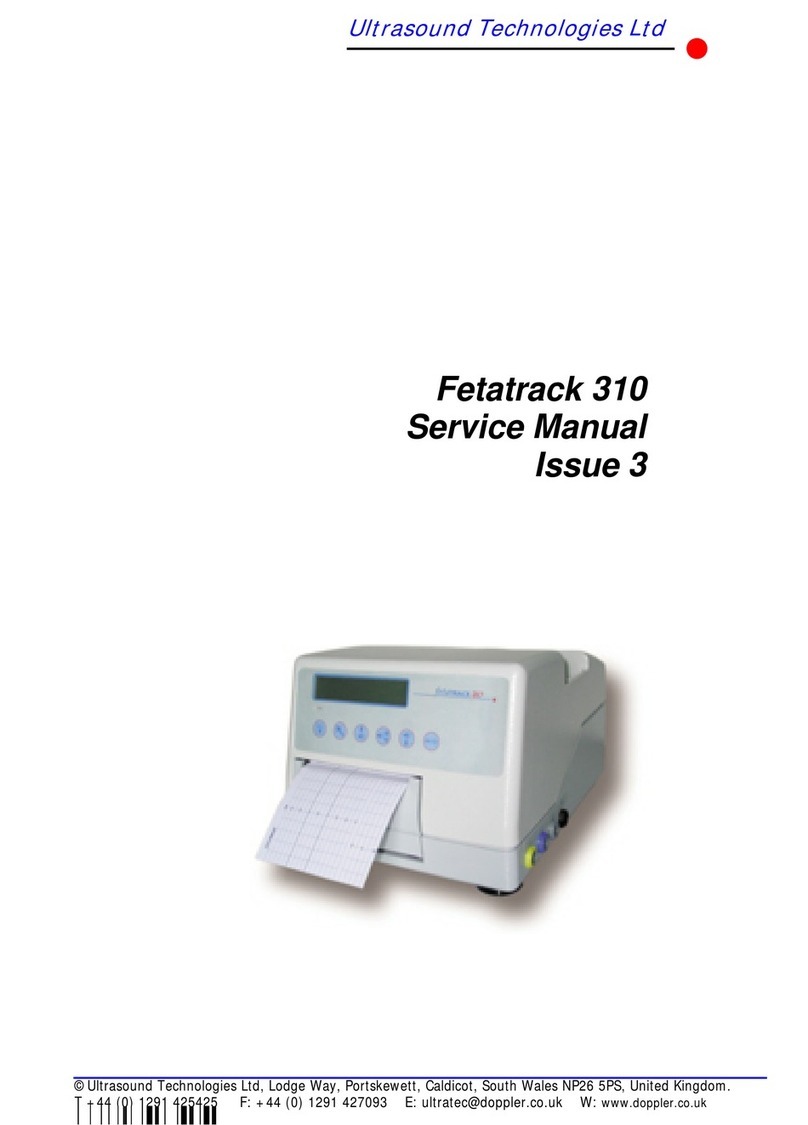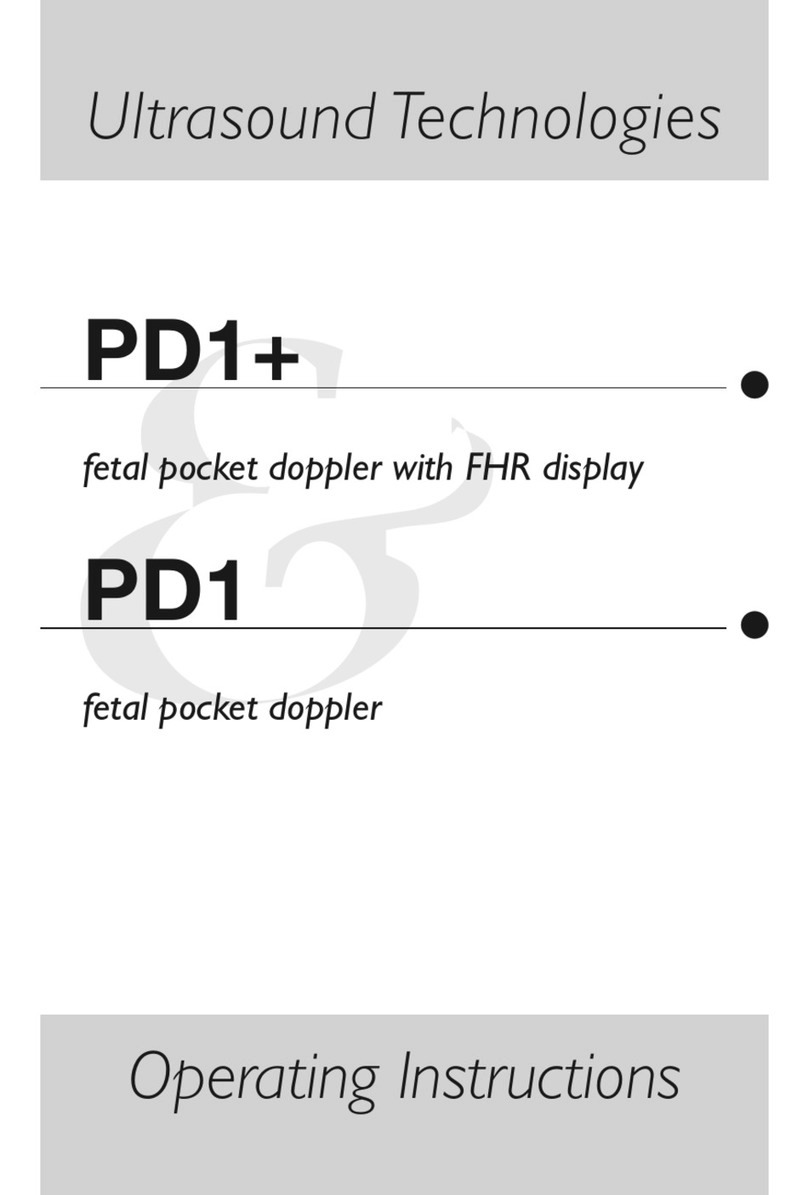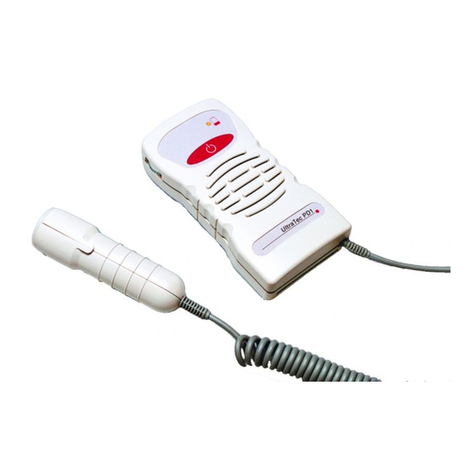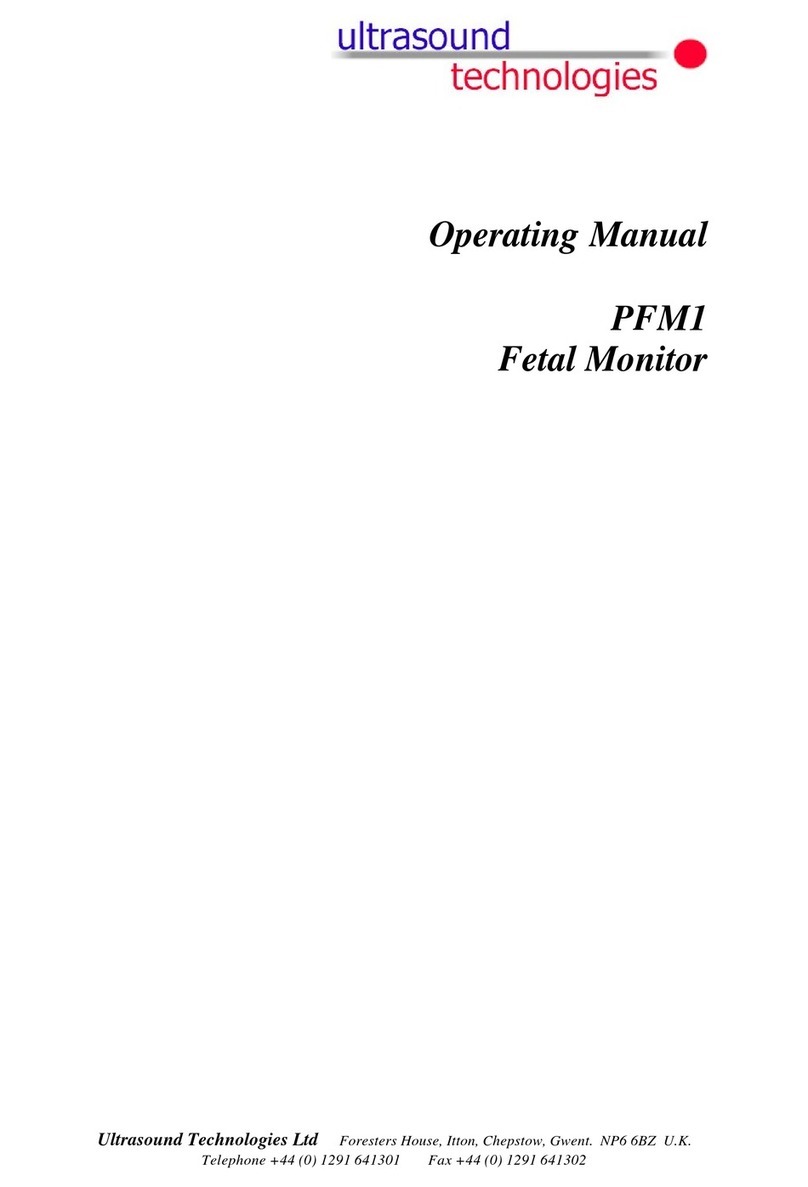
Care of your
doppler
After each use carefully wipe excess coupling gel from the transducer with a soft tissue.
Never use alcohol or any other solvent to clean any part of the Pocket Doppler, as these
may cause damage. If cleaning becomes necessary wipe the Pocket Doppler with a damp
cloth moistened with a mild detergent or Milton.
The transducer face is very delicate and may be damaged by dropping.
Simple fault
finding
Warranty
In the unlikely event of instrument failure, the following simple checks may be made before
contacting your supplier for further advice.
•Unplug any headset and turn the volume control to maximum..
•Turn the unit on and observe the Battery Low indicator, if it does not illuminate,
replace the battery and try again.
•If the Battery Low indicator illuminates and then goes out (normal operation) stroke
the transducer face.
•If no audio signal is heard in the loudspeaker consult your supplier.
When contacting your supplier with a problem please have available the instrument type
and serial number. The serial number can be found inside the battery compartment.
A service manual for this equipment, which includes circuit diagrams, parts lists and test
procedures, is available and may be purchased from your supplier or directly from
Ultrasound Technologies Ltd.
Your Pocket doppler is warranted for a period of 3 years against defects in material and
workmanship. Any instrument that proves to be defective within that period will be repaired
or replaced free of charge, provided that:
i) the instrument has not been damaged accidentally or by misuse or mishandling.
ii) no unauthorised attempts at repair have been made.
iii) the goods are returned to Ultrasound Technologies Ltd or its authorised
representative freight pre-paid.
Under no circumstances whatsoever shall Ultrasound Technologies Ltd have any liability
for loss or for any indirect or consequential damage.
Service
